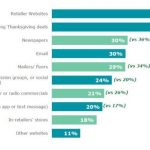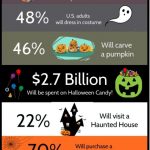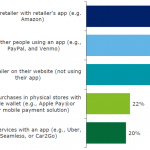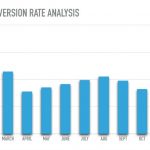Less Than 100 Days To Christmas: How Online Shopping Is Powering British Retailing
— October 23, 2017

PublicDomainPictures / Pixabay
For many a reporter, there is no greater barometer of a country’s economic health than Christmas retail sales.
This year, like every other, we can expect to see TV reporters vox popping busy shoppers about the contents of their bags, as though it were some kind of scientific exercise.
Real results, of course, won’t come in for some days after Christmas itself. But, with less than 100 days now to go until the big day, what we already know is this – this year’s Christmas retail figures are going to be the most significant for years.
UK month-on-month retail sales have declined a little in December for the last two years, according to the Office for National Statistics (ONS). And the economic climate has arguably deteriorated since then.
Despite good news like unemployment falling to its lowest since 1975, we are now seeing a range of counter-directional indicators:
- Things are getting more expensive. Inflation, which was just 0.4% this time two years ago, hit 2.6% in July. Coupled with low wage growth for many, especially in the public sector, and it means less money to go around.
- Consumer credit is at its highest level for a decade, with many buyers resorting to borrowing to fund their purchases and many others obliged to make hefty final-year pay-offs on new PCP car loan schemes.
- It is reshaping shoppers’ future. The average household savings ratio has plummeted to a historic low of 1.7% of household income, according to ONS. Quite simply, shoppers have less money to go around.
- Retailers are beginning to see the effects. Advertisers are pulling back on spending, hurting agencies like WPP, while average house prices fell by 0.1% between July and August, according to Nationwide.
In recent years, technology like new smartphones has provided a reliable boost to end-of-year retail sales. But, as Dixons Carphone’s recent results showed, the growing price of increasingly-sophisticated handsets is causing consumers to hold back from new purchases. With the upcoming new releases from Apple, Samsung, and Google likely to be priced even more premium than before, few would expect this slowdown to ease.
One trend we should expect to drive Christmas sales, more than ever, however, is online. Internet retail now makes up roughly 14% of sales for both clothes stores and department stores, and it is growing at 11.9% and 8.4% year-on-year, respectively.
Unlike the overall UK retail spending results, which, as I said, have dipped slightly in the last two years, internet-specific retail always spikes massively in November. November 2015 accounted for 21% of all sales and this actually rose to 22% in 2016. PCA Predict’s own data showed a staggering 92,790,300 internet purchases being made throughout the month last year.
The high sales volume within November is primarily because of how big a retail day Black Friday has become in Britain, with a record £1.23bn spent last year on just one day alone. Customers of all ages are now well used to researching and bargain-hunting online. In the economic circumstances that are now emerging, these are likely to be the behaviours that drive Christmas shopping trends this year. Savvy shoppers who spend wisely using the power of the internet should be able to enjoy Christmas without breaking the bank.
But, from a retailer perspective, there is a risk that not all boats will rise. In mobile apps, it is now sadly true that consumers spend more than half their digital time in just five main applications.
Do we really want retail to become concentrated in this way? We need the digital uplift to Christmas retail sales to be spread as wide as possible so that spending can filter back into businesses and families across the country.
That is why it is imperative small and medium-sized online sellers alike take a leaf out of the big players’ books, creating an online ordering, checkout and fulfillment process that is quick, frictionless and joyful to use.
Retailers should prepare their infrastructure to handle seasonally increased web traffic, plan stock ahead for this year’s big gift trends and ensure their systems are set up to catch and correct data entry errors input by frazzled, last-minute shoppers, for whom a misdirected delivery could be the difference between a happy Christmas and dinner in the dog house.
With conditions tightening on consumer spending, internet sales could be the best hope of boosting total Christmas business this year whilst serving cost-conscious shoppers. But those benefits will only be enjoyed by retailers that have calibrated their strategy to cope. For those which have not, there are less than 100 days left to make a difference.
Digital & Social Articles on Business 2 Community
(31)













